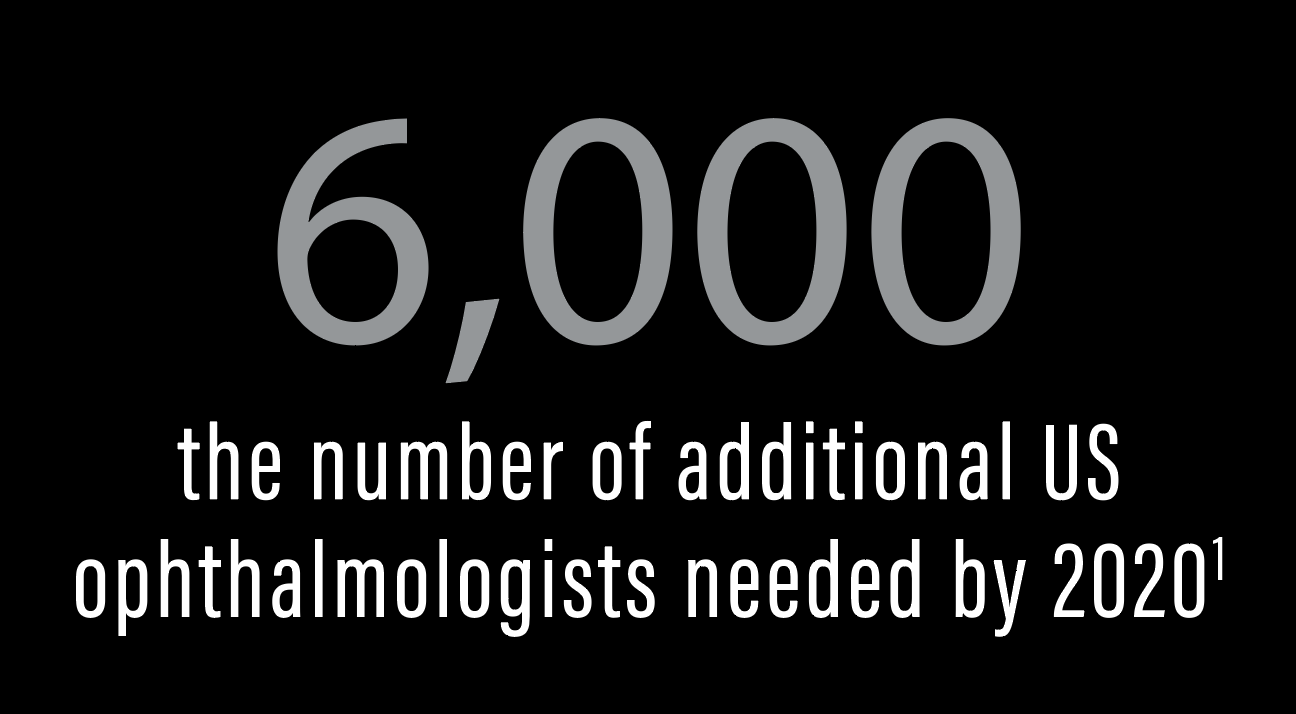One of the most urgent questions facing eye care providers today is, “How are we going to manage the increasing number of patients in the face of a shortage of surgeons?” According to the Association of American Medical Colleges, by 2020 more than 6,000 additional ophthalmologists will be required to fill the country’s eye care needs.1
This current crisis looms due to the steady rise of patient demand as the baby boomers enter their mid-60s amid the aging of the overall US population. Although not a majority, baby boomers make up a bigger part of the population than ever before. It has been estimated that 20% of Americans will be older than 65 years of age by 2029. On top of that, cataracts, glaucoma, macular degeneration, and diabetic disease are all age-related conditions.2,3

FORMING PRACTICE PARTNERSHIPS
Optometrists, with expanded scope of practice laws in every state, will need to help carry the demand of aging baby boomers. Many of these patients will be seen in optometric practices. In order to meet the ever-increasing demand, alternative practice opportunities may need to be explored. The conversation should encompass partnerships between optometrists and ophthalmologists that efficiently utilize both professions, maximizing the capabilities and services each provides.
Let’s look at the word partner. Both patients and ophthalmologists may be best served by a practice model that includes optometrist owners, meaning true OD partners in a practice. I am a partner in my practice, Eye Care Associates of Nevada, and I can attest that the optometrists in the equation allow the surgeons in the practice to maximize their talents. By that, I mean we can treat a majority of medical patients and allow the surgeons to see preoperative cases and focus their time on performing surgery. The optometrists in such a practice facilitate networking with optometrists outside of the practice and provide a conduit for constant communication.
In this model, the practice’s clinical side thrives. Surgeons often do not have the time to do what medical optometrists can in a busy surgical practice. Besides general medical eye exams, these tasks include screening for and treating dry eye disease and providing postoperative care (see Keys to Preparing Patients for Surgery below). The key in the face a declining number of surgeons and increasing number of patients is keeping surgeons as busy as possible doing surgery.
KEYS TO PREPARING PATIENTS FOR SURGERY
1. The Ocular Surface: A stable ocular surface is crucial to optimal surgical outcomes. A complete dry eye examination enables necessary treatment to be initiated before the patient visits the surgeon. A good place to start is with the Standard Patient Evaluation of Eye Dryness (SPEED) questionnaire.
2. Technology Education: Patients need to know what they can expect during their refractive or cataract procedure. What are their options and what are the choices they will need to make? Which terminology should they know? A thorough discussion of IOL technology—including toric, multifocal and extended-depth-of-focus options—is important.
3. Perioperative Medications: Optometrists play an important role in ensuring that patients understand their perioperative drop regimens and receive the medications as prescribed.
4. Follow-Up: As the provider of follow-up care, optometrists monitor patients and address complications in consultation with the surgeon as needed.
Specifically, an optometrist at the helm as a vested partner can contribute to the practice by developing and running the referral network and working to standardize patient care. Additionally, optometrists can take the time to educate patients before they see the surgeon. Explaining premium IOL selection in cataract surgery, introducing patients to new technology, and describing toric, multifocal, and extended-depth-of-focus lens options takes the burden off surgeons and better prepares patients. We optometrists explain the need for compliance with regimens for preoperative corneal surface optimization and the proper use of postoperative drops.
CONCLUSION
An increasing number of states allow ophthalmologists and optometrists partnerships. It is, of course essential that anyone considering this arrangement consult an experienced health care attorney. Optometrists who partner with ophthalmologists and are integrated in practice with them share the workload by practicing at full scope, allowing surgeons to be dedicated to surgery. A structure that provides meaningful integrated practice synergy lays the foundation for success now and in the future. The real winners, of course, are our patients, who will be better educated and therefore more empowered to make optimal decisions about their eye care.
1. US Department of Health and Human Services Health Resources and Services Administration Bureau of Health Professions October 2006. Physician Supply and Demand: Projections to 2020. https://bhw.hrsa.gov/sites/default/files/bhw/nchwa/projections/physician2020projections.pdf. Accessed January 16, 2018.
2. Colby SL, Ortman JM. The Baby Boom Cohort in the United States: 2012 to 2060. United States Census Bureau. Available at http://www.census.gov/prod/2014pubs/p25-1141.pdf. Accessed January 16, 2018.
3. Association of American Medical Colleges Center for Workforce Studies. 2012 Physician Specialty Data Book. https://members.aamc.org/eweb/upload/14-086%20Specialty%20Databook%202014_711.pdf. Accessed January 16, 2018.




